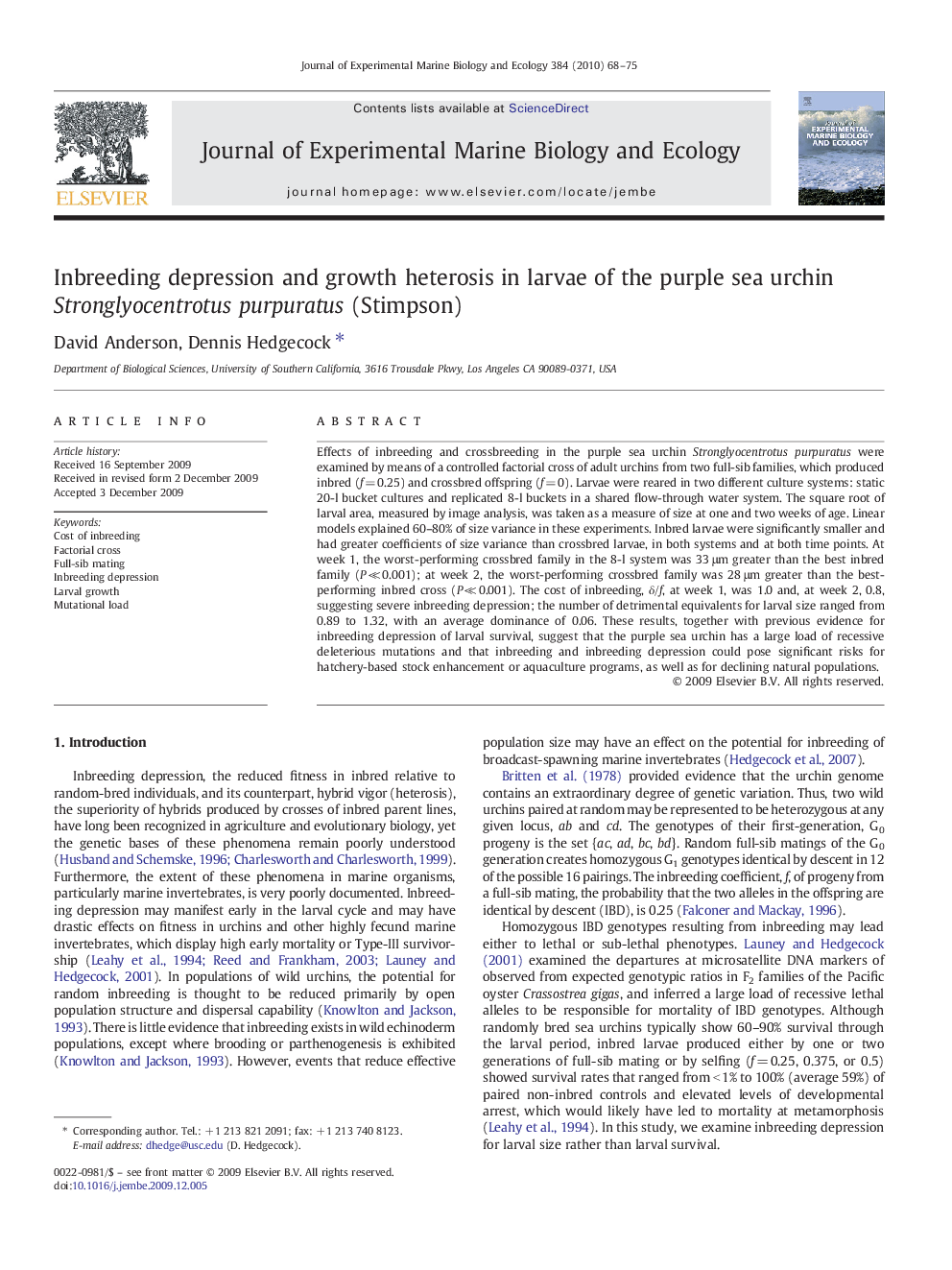| Article ID | Journal | Published Year | Pages | File Type |
|---|---|---|---|---|
| 4396643 | Journal of Experimental Marine Biology and Ecology | 2010 | 8 Pages |
Effects of inbreeding and crossbreeding in the purple sea urchin Stronglyocentrotus purpuratus were examined by means of a controlled factorial cross of adult urchins from two full-sib families, which produced inbred (f = 0.25) and crossbred offspring (f = 0). Larvae were reared in two different culture systems: static 20-l bucket cultures and replicated 8-l buckets in a shared flow-through water system. The square root of larval area, measured by image analysis, was taken as a measure of size at one and two weeks of age. Linear models explained 60–80% of size variance in these experiments. Inbred larvae were significantly smaller and had greater coefficients of size variance than crossbred larvae, in both systems and at both time points. At week 1, the worst-performing crossbred family in the 8-l system was 33 μm greater than the best inbred family (P ≪ 0.001); at week 2, the worst-performing crossbred family was 28 μm greater than the best-performing inbred cross (P ≪ 0.001). The cost of inbreeding, δ/f, at week 1, was 1.0 and, at week 2, 0.8, suggesting severe inbreeding depression; the number of detrimental equivalents for larval size ranged from 0.89 to 1.32, with an average dominance of 0.06. These results, together with previous evidence for inbreeding depression of larval survival, suggest that the purple sea urchin has a large load of recessive deleterious mutations and that inbreeding and inbreeding depression could pose significant risks for hatchery-based stock enhancement or aquaculture programs, as well as for declining natural populations.
